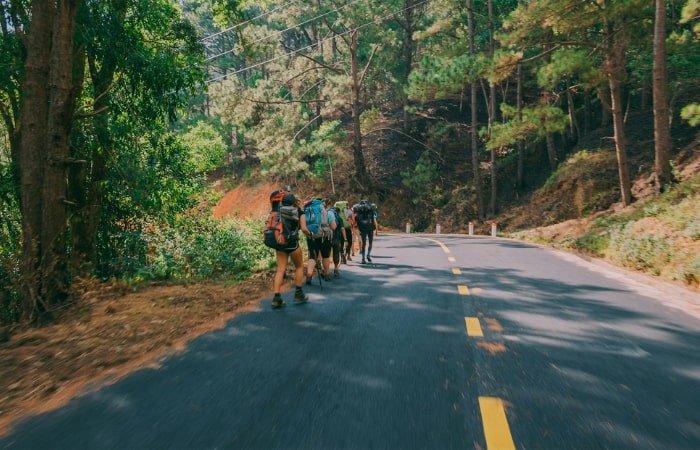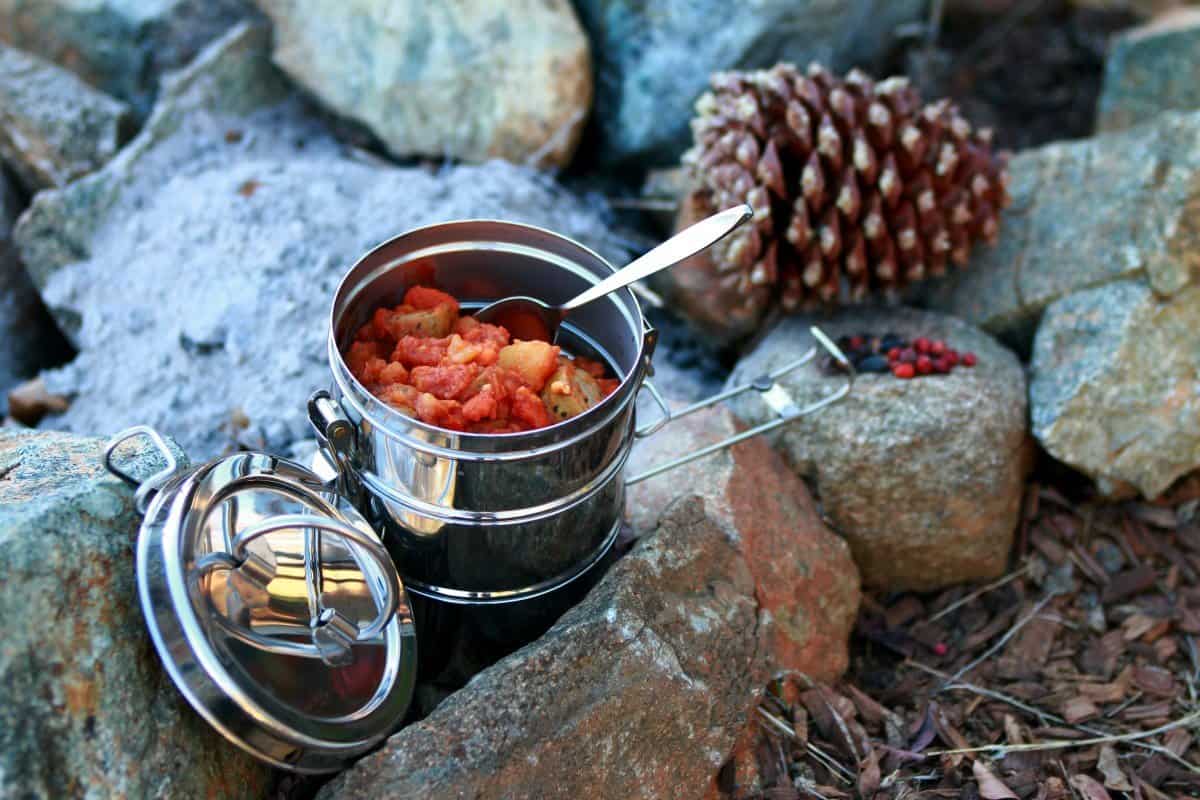Hiking is an excellent way to stay physically active while enjoying the sights and sounds of nature. Longer excursions can last days or weeks, with the intensity varying based on the ruggedness of the terrain. Depending on the duration and trail grade, hiking may burn a significant number of calories, with trails of 6–15% grade resulting in 984 calories burned per hour for a 270-pound individual.

As such, hiking can be great for weight loss when paired with a healthy diet. Of course, factors like the weather and time spent hiking may limit your activities. Therefore, if you want to stay committed to your weight loss plan during and after a tough hike, you need to make the right adjustments so that your outdoor adventures can align with your fitness goals.
During a Hike
Set a Realistic Pace
When it comes to hiking for weight loss, one common pitfall is the desire to start as intensely as possible to maximize results. While enthusiasm is commendable, pushing yourself too hard from the beginning can lead to exhaustion and muscle strain, which may force you to abandon the hike prematurely. Trails like the Grand Canyon’s South Kaibab Trail, with its steep descents and ascents scattered throughout, require an especially thoughtful approach to warming up and pacing.
Thus, make sure to know your hiking pace or baseline miles per hour beforehand. By keeping this in mind, you can cover your miles in your desired time frame while ensuring that your body is efficiently adjusting to the trail. You can also decide when to power through long uphill stretches or take a break. This will allow you to complete the hike from start to finish, and hit your calories burned goal without overwhelming your body.
Align with Your Weight Loss Plan

During a tough hike, what you bring (or do not bring) can make the difference in you finishing your hike and sticking to your weight loss plan. Many individuals use medication in tandem with nutrition and fitness, which helps to regulate other biological processes hindering weight loss, such as insulin resistance or fat absorption. However, carrying around bulkier options like semaglutide or liraglutide injections can be a hassle while trekking in the wild. There is also a higher risk of contamination if these injections are accidentally exposed to the elements or are kept at the wrong temperature.
Fun Outdoor Quiz
This doesn’t mean that you must pause your medication plan, which can backfire and lead to unwanted side effects including weight gain. Instead, make sure your weight loss plan aligns with your hiking goals and lifestyle. Many individuals opt for phentermine for weight loss because of its capsule form, which makes it easy to pack, transport, and consume during an adventure. Phentermine assists in weight loss by increasing energy levels, which can help in tackling steep inclines and long distances with greater ease. Otherwise, it also helps in controlling appetite, making it easier to stick to a nutrition plan and avoid excessive snacking during breaks, even as you explore the wonders of areas like the Cascade Mountains.
Remember Proper Nutrition

Medications like phentermine can assist in curbing your appetite. However, it’s crucial to maintain a balanced and nutritious diet during your hike nonetheless. Plan ahead and bring a well-balanced meal that includes lean protein, complex carbohydrates, and vegetables. You can also use resealable bags or containers to divide your snacks into appropriate portions, preventing unnecessary calorie intake.
This is easier than it sounds. Food safety while hiking is especially paramount when considering weight loss. While on the 2-4 week trek of John Muir Trail, for example, you can bring beef jerky and other shelf-stable meats instead of opting for raw meat and poultry products as your source of protein. Also, pack whole or dried fruits as a source of vitamins and fiber to keep your energy levels up without compromising your weight loss goals. Once again, it’s all about choosing alternatives that can keep you healthy and fit during a hike. The right choices can make the difference between you sticking to your weight loss plan during a tough hike or not.
After a Hike
Avoid Overindulging

After completing a tough hike, the temptation to immediately reward yourself with food can be strong. However, your post-hike meals should be approached with caution, as the body takes in more calories post-workout. Treat this as an opportunity to nourish your body, rather than as a reward for the calories burned during the hike.
Instead of impulsively diving into a calorie-laden feast, have a light meal that you’ve prepared in advance. Take your time while eating and pay attention to your body’s hunger cues. Eating mindfully can help you recognize when you’re full and prevent overeating. If you’re still hungry after your meal, have some healthy, low-calorie snacks like fresh fruit, vegetables, or a small serving of yogurt to satisfy your appetite without derailing your weight loss plan.
Adjusting Alternatives
If you’ve swapped out medications or made changes to your dietary habits, it’s important to adapt your post-hike routine accordingly. The weight loss boost you’ve acquired during the hike may also call for adjustments in pre-existing weight loss plans. So, consult with your healthcare provider immediately afterward to ensure that you’re adhering to the prescribed dosage and schedule of any medication.
Similarly, you can consult a dietician for your meal plans in the succeeding weeks. Consider consuming a blend of protein and carbohydrates to aid recovery and muscle repair. Foods like grilled chicken with quinoa and steamed vegetables can provide the necessary nutrients to replenish your energy stores. Overall, stick to your established healthier choices, even when temptation looms.
Maintaining Regular Exercise

It can be tempting to relax and take a break from your weight loss plan following a successful tough hike. However, weight loss is all about sustainability, and maintaining an active lifestyle post-hike is crucial for your overall fitness journey. You can plan your next adventure or hiking trip on a less intense trail. Choose a path with very little elevation gain, like the Hoh River Trail Hike at the Olympic National Park, or with a shorter distance, such as The Zion Narrows. The latter can take anywhere from a few hours to a full day. Having a goal to work towards will help you stay motivated and ensure you maintain your exercise routine.
Otherwise, experiment with different forms of exercise, such as swimming, cycling, or yoga, to prevent workout monotony and challenge different muscle groups. Just as you schedule your hikes, plan your regular exercise sessions. Setting specific times for workouts helps ensure they become a consistent part of your routine.
By following these guidelines, you can ensure that your hiking adventures contribute to your weight loss journey and overall fitness success. So, lace up your hiking boots, embrace the challenges, and keep pushing forward toward your weight loss goals.









